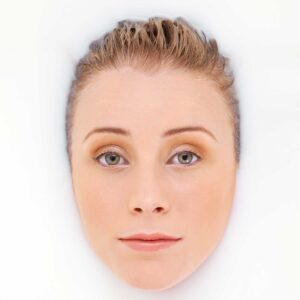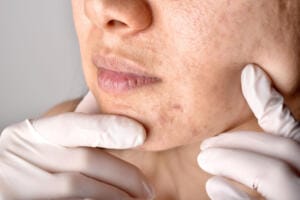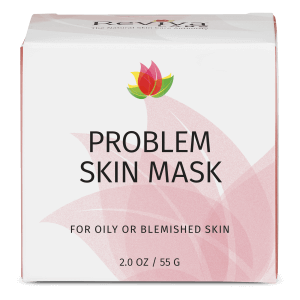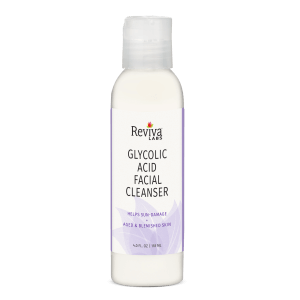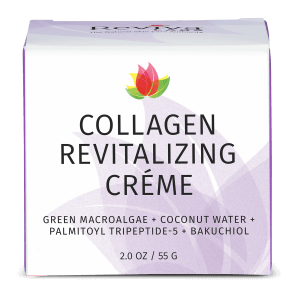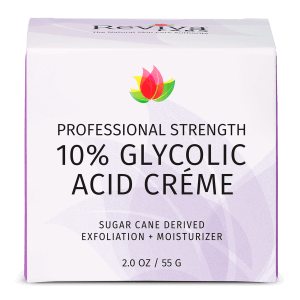Natural, Reviva Labs, Skin Care
How To Figure Out Your Skin Type
When it comes to skincare, nothing feels more essential than truly knowing your skin type. It’s like unlocking the key to healthier skin, glowing skin and a skincare routine that actually works. According to the American Academy of Dermatology, your skin type is a vital factor that can affect how your skin reacts to different products and environmental factors. In fact, knowing your skin type can help reduce unnecessary irritation, breakouts, and sensitivity that arise from using products that simply aren’t suited to your skin. But how do you actually figure out your skin type?
First, forget any assumptions you may have picked up from popular skincare myths. Skin types aren’t about popularity contests or personal preferences; they’re a matter of biology. The right knowledge, a bit of testing, and observation will reveal your skin type and set the stage for a targeted, effective skincare regimen.
What Does Skin Type Mean?
Your skin type is primarily determined by genetics but can be influenced by factors like age, climate, hormones, and lifestyle choices. Skin types generally fall into one of five categories: normal, oily, dry, combination, and sensitive. Each has unique characteristics, so it’s essential to recognize these differences before diving into a new skincare routine. When you know which category you belong to, you’re better prepared to choose products that help, rather than harm, your skin.
The Five Basic Skin Types
1. Normal Skin: If you have normal skin, you may not experience significant issues with oiliness or dryness. Normal skin often looks well-balanced, with a smooth texture, fine pores, and a healthy appearance. This skin type is neither too greasy nor too flaky and usually maintains an even tone.
2. Oily Skin: Oily skin tends to produce more sebum, the skin’s natural oil, than other types. This overproduction can make your face appear shiny, especially in areas like the forehead, nose, and chin (the T-zone). Those with oily skin might struggle with larger pores and may be more prone to acne due to clogged pores.
3. Dry Skin: Characterized by a lack of moisture, dry skin often feels tight, rough, or flaky. It may have a dull complexion and be prone to irritation. Dry skin can also age more quickly because it lacks the natural oils that help keep it supple.
4. Combination Skin: This type combines characteristics of both oily and dry skin. You might have an oily T-zone but dry or normal skin on your cheeks. Combination skin can be challenging to manage, as different areas of the face need different care.
5. Sensitive Skin: Sensitive skin is more prone to redness, irritation, and reactions to products. People with sensitive skin might feel stinging or burning when they use certain skincare products. This skin type often requires gentle, fragrance-free products to avoid irritation.
The Blotting Sheet Test: A Quick Method to Identify Your Skin Type
One of the simplest ways to start determining your skin type is the blotting sheet test. Here’s how to do it:
- Begin with a clean face. Wash with a mild cleanser and wait for about an hour without applying any other products.
- Take a few blotting sheets or pieces of tissue and press them on different areas of your face: your forehead, nose, chin, and cheeks.
- Observe the results. If the sheets come away with oil only from the T-zone, you likely have combination skin. If they’re oily all over, you probably have oily skin. If the sheets show little to no oil, you likely have dry skin. A small amount of oil evenly distributed suggests normal skin.
This test gives you a quick snapshot but remember that your skin type can change depending on the season, age, or hormonal fluctuations. That’s why it’s good to observe your skin over time.
Skin Care Ingredients Based on Your Skin Type
The key to maintaining healthy skin is not just knowing your skin type but understanding which ingredients can work wonders for you. Let’s break it down by type.
For Normal Skin: You’re in a good spot here, as your skin likely tolerates a variety of ingredients. Look for gentle cleansers, lightweight moisturizers, and a sunscreen that’s broad-spectrum with SPF 30 or higher. Antioxidants, like Vitamin C or niacinamide, can enhance radiance and help maintain balance.
For Oily Skin: You might want to try products that are non-comedogenic (won’t clog pores) and mattifying. Ingredients like salicylic acid are fantastic for oily skin because they help to dissolve oil within the pores, reducing the likelihood of breakouts. Niacinamide is another great choice, as it helps control oil production and improve skin tone.
For Dry Skin: Seek out deeply hydrating and emollient ingredients like hyaluronic acid, glycerin, and ceramides. These help attract moisture to your skin and prevent water loss. Richer moisturizers, or even a lightweight oil, can provide an additional layer of protection, especially in colder weather.
For Combination Skin: Your skin type requires a balanced approach. Gel-based or lightweight moisturizers can help address oiliness in the T-zone without exacerbating dryness on the cheeks. You may even find that treating different areas with different products works best. A hydrating serum across the face, for instance, and a mattifying primer in the T-zone can give combination skin the customized care it needs.
For Sensitive Skin: If you have sensitive skin, the fewer ingredients in a product, the better. Look for calming ingredients like aloe vera, colloidal oatmeal, or chamomile. Fragrance-free, hypoallergenic products can minimize irritation. Patch testing new products before applying them all over is crucial with sensitive skin.
Adapting Your Routine Over Time
Skin doesn’t stay the same forever. Aging, hormonal changes, stress, and even your environment can alter your skin’s behavior. So, if you’ve always had normal skin but start noticing more oil or dryness as you age, your skin type may be shifting. Hormonal changes during pregnancy or menopause, or even stress-induced hormonal fluctuations, can cause your skin to veer toward oilier or drier tendencies.
Be prepared to adjust your routine accordingly. For example, during winter months, dry skin might require a heavier moisturizer to combat the effects of cold, dry air. Conversely, in summer, your skin might produce more oil, and lightweight products may be a better fit.
Observing Your Skin’s Response to Products
One of the most telling ways to identify your skin type is by noting how your skin responds to various products. If you use a thick moisturizer and your skin feels heavy or greasy within an hour, you might have oily skin. If it absorbs quickly but still feels tight, it’s likely on the drier side.
Additionally, the way your skin reacts to active ingredients can be a clue. If you’re frequently experiencing redness or irritation, you may have sensitive skin. The key is to try products gradually and see how your skin feels.
Final Note on Sunscreen: Essential for Every Skin Type
Regardless of your skin type, sunscreen is non-negotiable. Daily sun protection helps prevent premature aging, hyperpigmentation, and, most importantly, skin cancer. Choose a sunscreen that matches your skin type — a lightweight, oil-free version for oily skin or a more hydrating option for dry skin. The American Academy of Dermatology recommends a broad-spectrum sunscreen with at least SPF 30.
In conclusion, identifying your skin type is the foundation of a successful skincare routine. It may take a bit of observation and patience, but it’s well worth the effort. Once you know your skin’s unique needs, you can give it the tailored care it deserves, helping you achieve and maintain the radiant, healthy skin you’re after.





